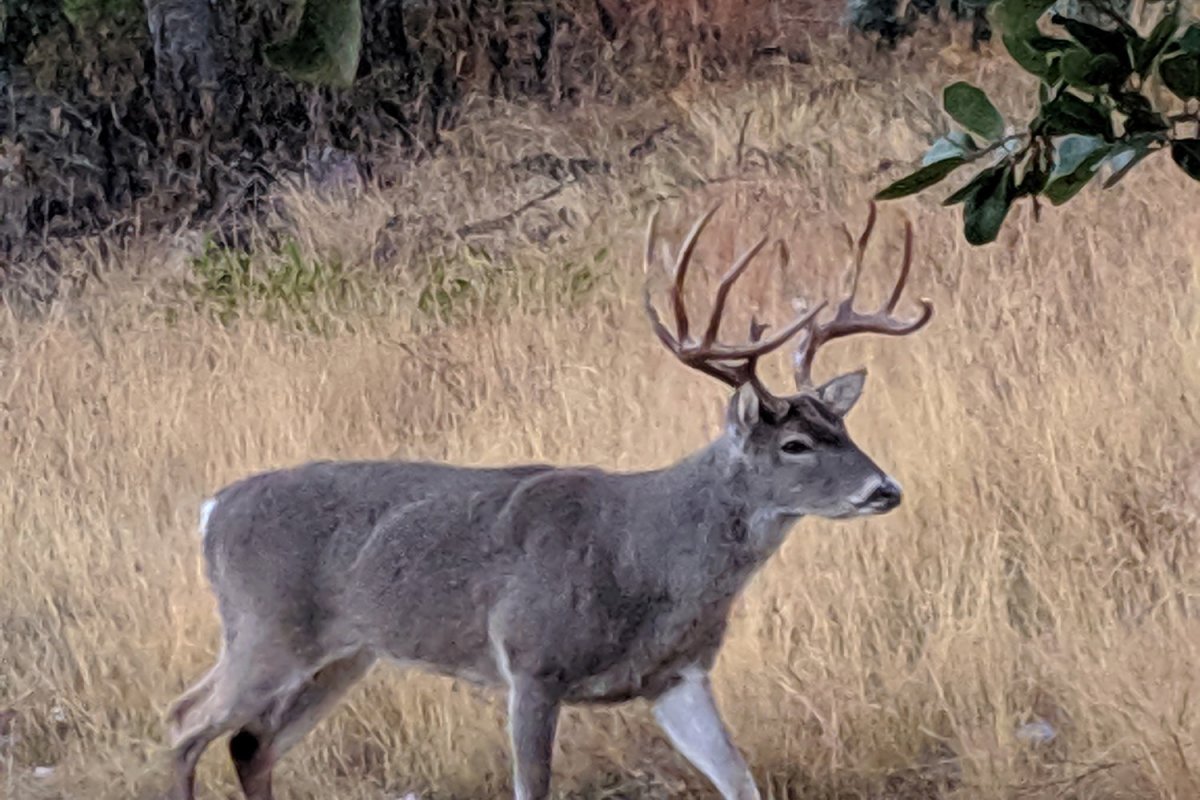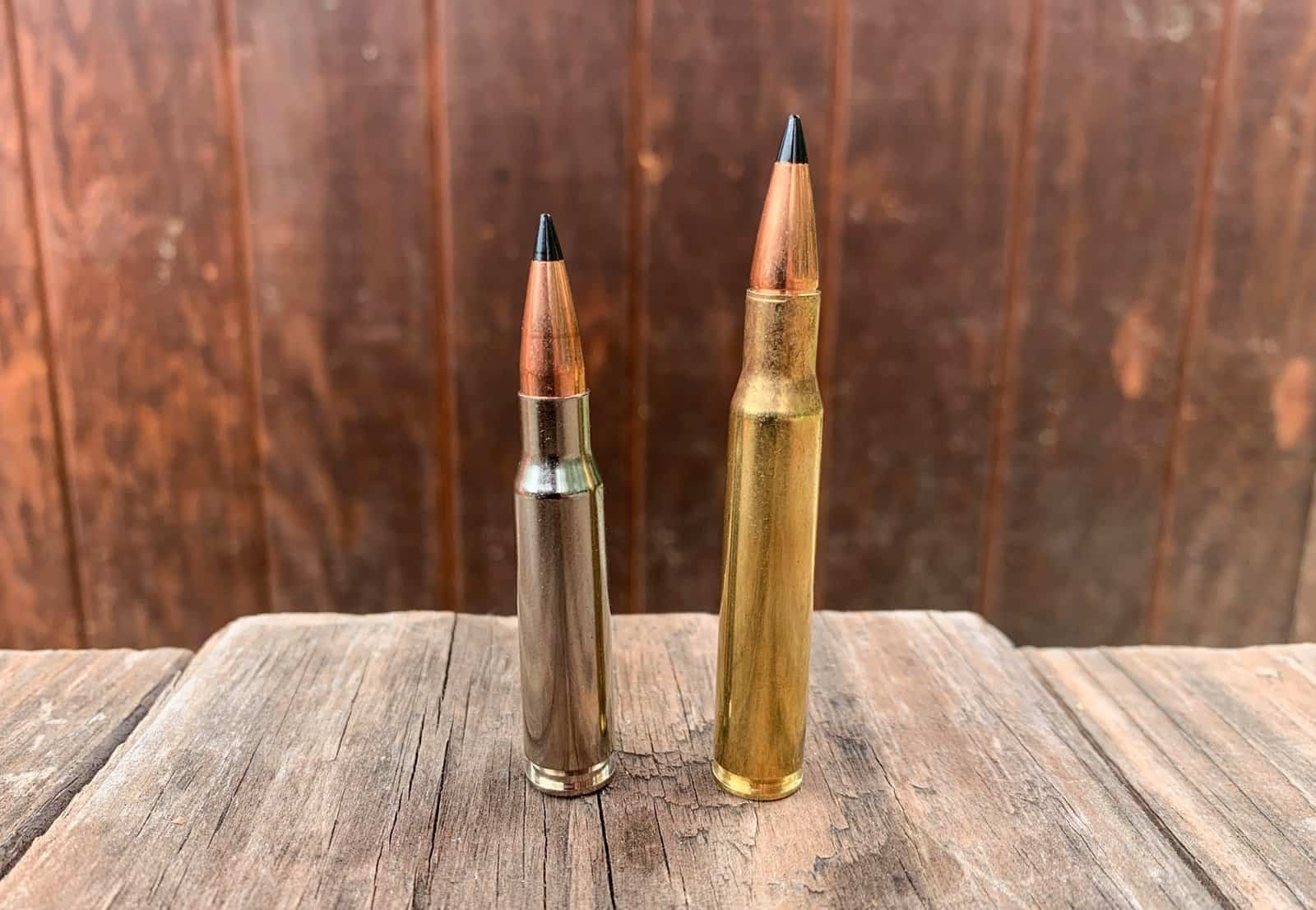Winter wheat often provides more forage for deer than winter rye, which is more resilient to cold and poor soil. Deer favor winter wheat’s palatability, yet rye’s hardiness ensures a consistent food source.
Deer hunters and land managers often debate the merits of planting winter wheat versus winter rye as food plots for white-tailed deer. The choice between these two grains hinges on factors like forage quality, growth patterns, and adaptability to challenging growing conditions.
Winter wheat tends to be preferred by deer due to its sweetness and higher nutritional value. Conversely, winter rye stands out with its ability to thrive in colder temperatures and less fertile soils, making it a reliable standby when conditions aren’t ideal for other crops. The decision ultimately aligns with specific management goals, regional climate, soil health, and the need for a sustainable food source throughout hunting season and beyond.

Credit: www.gunskins.com
Battle Of The Cereals: Winter Wheat And Rye
Deer hunters and land managers often debate the best cereal for wildlife plots. This post dives into Winter Wheat vs. Winter Rye. Both offer benefits as cool-season forages. But which reigns supreme for deer? Let’s break down their unique characteristics.
Key Characteristics Of Winter Wheat
Winter wheat, loved by deer, is a top choice for forage. Its attributes include:
- Quick growth in cool conditions
- Tolerant of a broad range of soils
- High forage production for deer feed
- Palatability that attracts deer consistently
Its ability to thrive in various soils makes winter wheat versatile. It becomes lush, offering great coverage and nutrition.
Essential Traits Of Winter Rye
Contrastingly, winter rye stands out with its hardiness. Key traits include:
- Exceptional growth in poor soils
- Resistance to many plant diseases
- Early greening long before other cereals
- Attracts deer with early forage availability
Winter rye’s resilience allows germination in harsh conditions. It provides food sources when others fail to establish.
Both cereals enhance deer habitat and nutrition. The decision between winter wheat and rye depends on site conditions and wildlife goals. Understanding each grain’s strengths will help you choose the perfect crop for your land.

Credit: www.amazon.com
Nutritional Face-off: Feeding Deer In The Cold
As winter blankets the ground with snow, deer foragers turn to hardy crops for sustenance. The “Nutritional Face-Off: Feeding Deer in the Cold” pits two popular winter cereals, winter wheat and winter rye, against each other. These grains not only survive freezing temperatures but also offer vital nutrients to deer during the toughest season. This section dives into the nutrient profiles of both crops to determine the better winter feast for deer.
Nutrient Analysis Of Winter Wheat
Winter wheat is a favored forage for deer due to its nutritional composition. This cold-tolerant crop thrives in low temperatures, providing a reliable food source. Below is a breakdown of winter wheat’s nutrients:
- Carbohydrates – offer energy to maintain body heat
- Proteins – support muscle health and repair
- Fiber – aids digestive health
- Minerals – vital for bone growth and bodily functions
- Vitamins – important for overall well-being
Deer benefit greatly from these components of winter wheat, especially when food is scarce.
Comparative Benefits Of Winter Rye
Winter rye, although similar to wheat, offers its unique advantages. It is notable for its ability to grow in poorer soils and lower temperatures. The comparative benefits include:
| Nutrient | Benefit to Deer |
|---|---|
| High fiber content | Promotes a healthy gut |
| Rich mineral profile | Enriches diet with magnesium, potassium, and more |
| Phenolic compounds | Antioxidants support overall vitality |
Winter rye stands out for durability and is a robust option for feeding deer amid frost.
Cold-season Survivors: Growth In Harsh Climates
Cold-Season Survivors: Growth in Harsh Climates shines a spotlight on two robust forage options for deer – winter wheat and winter rye. These crops display unique survival characteristics that benefit not only the deer but also the land. Let’s delve into how these grains endure and thrive during the chilly months, providing ample nutrition for wildlife in the process.
Winter Wheat’s Resilience To Frost
Winter wheat stands strong against the frost. Its ability to withstand cold makes it a top choice for many. Once the ground thaws, winter wheat jumps into growth quickly. It’s a reliable food source for deer as it:
- Germinates at 38 to 40 degrees Fahrenheit
- Survives under snow acting as an insulating blanket
- Rallies back in spring with vigor
Winter Rye’s Tolerance To Low Temperatures
Winter rye is a true champion in the face of icy weather. This grain tolerates temperatures as low as 33 degrees Fahrenheit. While others succumb, winter rye demonstrates exceptional endurance:
- Digs deep with a robust root system
- Offers food for deer even in peak winter
- Grows in poor soil where others can’t

Credit: issuu.com
Palatability And Preference: Deer Dining Choices
When choosing the best winter forage for deer, palatability and preference are crucial. These two factors can greatly affect the deer’s diet and their frequent visitation to a food plot. Understanding the dining choices amongst deer is essential when deciding between winter wheat and winter rye.
How Deer Respond To Winter Wheat
Deer commonly show a strong preference for winter wheat due to its sweetness and high forage quality. This winter crop often works as a magnet for deer, especially during the early growth stages when the leaves are tender and most digestible. Let’s break down the key reasons for deer’s preference:
- Sweet taste encourages more frequent visits.
- Tender leaves are easier for deer to digest.
- Rich in nutrients, promotes healthy growth for the herd.
The Attraction Of Winter Rye For Deer
Winter rye, on the other hand, stands out for its resilience to cold weather. It has the ability to grow in less fertile soil and offers deer a consistent food source deep into the winter. Its popularity among deer arises from:
| Winter Survival | Soil Adaptability | Year-Round Availability |
|---|---|---|
| Grows in very cold temperatures. | Thrives in various soil conditions. | Sustains deer populations even in the harshest months. |
Feel free to choose the right crop based on these factors. Select winter wheat for a highly palatable option with sufficient nutrition. Consider winter rye for a rugged, reliable choice that supports deer throughout the colder months.
Planting And Maintenance: Ensuring A Lush Pasture
Deer love grazing on winter wheat and rye. A well-maintained pasture offers them excellent nutrition. Proper planting and ongoing care are key. Here’s how to do it right.
Sowing Tips For Winter Wheat
Choosing the right time to sow is crucial for winter wheat. Aim for a period when soil temperature drops below 45°F. This allows wheat to establish before winter.
Prepare the soil carefully. A fine, firm seedbed promotes optimal growth. Use a disk harrow or a tiller to achieve this.
Sow at a depth of 1 to 1.5 inches. Ensure even coverage to avoid bare spots that lead to soil erosion.
Fertilize adequately, following soil test recommendations. Deer thrive on well-fertilized pastures.
Care Tactics For A Thriving Winter Rye Crop
Winter rye requires attention to flourish. Start with soil health. A pH of 5.5 to 7.0 is ideal for winter rye.
Apply nitrogen fertilizer at planting. Consider additional nitrogen in spring for enhanced growth and deer attraction.
Control weeds early. Use a pre-emergent herbicide if necessary. Weeds compete with rye and reduce its quality.
Lastly, monitor for pests regularly. Insect infestations can quickly decimate a crop. Prompt action can save your pasture.
Conclusion: The Ultimate Forage For Deer
As the sun sets on our exploration of deer forage, clarity emerges. The perfect winter feast for these majestic creatures teeters between two contenders. Winter Wheat and Winter Rye both present compelling cases, but only one can take the crown. Let’s dive into the specifics that might tip the scales in favor of one grain over the other.
Summarizing The Grain Game
Break down the benefits of each contender, we find Winter Wheat stepping forward with:
- Higher palatability which often makes it a preferred meal for deer.
- Better cold tolerance, ensuring a resilient food source through frosty nights.
- Soil health promotion, providing a legacy of fertility for future plantings.
Meanwhile, Winter Rye responds with its strengths:
- Impeccable germination, with a knack for sprouting even in the harshest conditions.
- Robust growth, often outpacing its wheat cousin in early development stages.
- Potent weed suppression, creating a cleaner slate for springtime flora.
Guiding Your Grazing Greens Choice
When tailoring a feast for deer, assess the local terrain and weather patterns:
| Consideration | Winter Wheat | Winter Rye |
|---|---|---|
| Soil Quality | Prefers richer soils | Adapts to poor soils |
| Temperature Resilience | Exceptional | Good with early frost |
| Deer Attraction | High | Varies |
Both grains boast distinct advantages, making the ultimate choice a matter of personal preference and specific local conditions. Taking into account your region’s climate and soil, as well as the desire to attract and nourish deer, align your selection with these factors for the best results.
Frequently Asked Questions On Winter Wheat Vs Winter Rye For Deer
Which Is Better For Deer: Winter Wheat Or Rye?
Winter wheat often proves superior for deer due to its higher forage quality. It has more protein that aids in deer nutrition and attracts deer consistently. However, a well-established winter rye plot can also provide a beneficial food source, especially where winter wheat struggles to grow.
When Should You Plant Winter Wheat Or Rye For Deer?
Planting should ideally occur in early fall. This allows the plants to establish before winter, providing a food source for deer throughout the season. For most regions, this means planting winter wheat or rye from late September to mid-October for optimal growth and deer attraction.
What Are The Soil Requirements For Winter Wheat And Rye?
Winter wheat requires well-drained, fertile soil with a pH between 6. 0 and 7. 0 for best growth. Winter rye is less picky, adapting to various soil types, including sandy or poor soils, and tolerates a pH range from 5.
0 to 8. 0, making it versatile for different conditions.
Can Winter Wheat And Rye Be Mixed For Deer?
Yes, mixing winter wheat and rye can benefit deer by offering diverse food sources. The combination provides a more resilient coverage over varying soil types and conditions, and extends the foraging window as these grains mature at slightly different times.
Conclusion
Deciding between winter wheat and winter rye for deer may hinge on your specific goals. Both grains offer benefits for wildlife nutrition and plot management. Remember, wheat promises sweeter forage, while rye stands tough against harsh conditions. Choose the crop that aligns with your land’s needs and the deer’s preferences.
Happy planting and wildlife watching!



